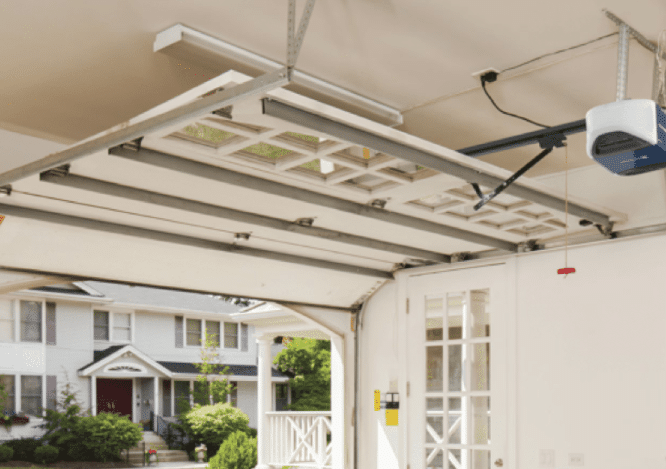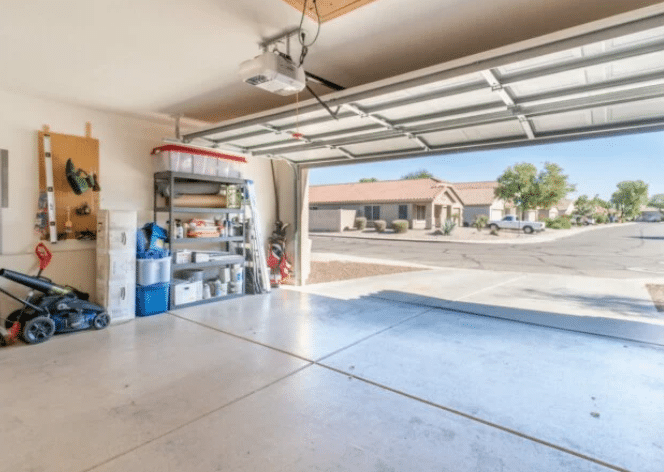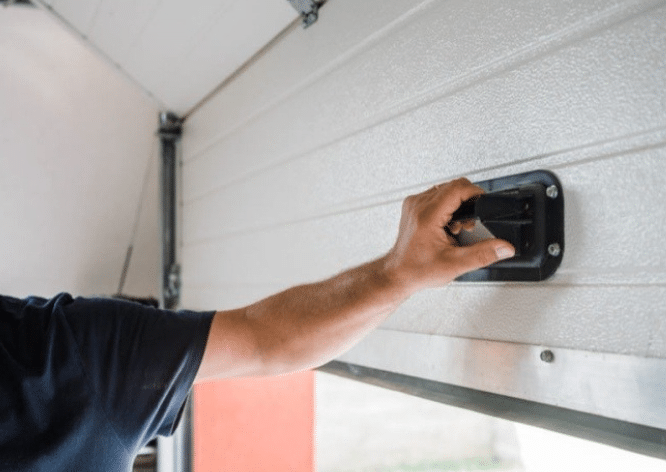Discover how understanding the anatomy of a garage door can help you make informed maintenance decisions, avoid costly repairs, and extend the lifespan of your garage door system.
Your garage door is more than just a convenient entryway; it is a complex system of components that work together to ensure smooth operation and security. Many homeowners overlook the importance of understanding the basic structure and function of their garage door until something goes wrong. Knowing the anatomy of a garage door equips you with the knowledge to identify potential issues early and communicate effectively with repair professionals.

In this comprehensive guide, we will walk you through each essential part of your garage door system. From the panels to the springs, every component plays a critical role. Familiarizing yourself with these elements not only improves your understanding but also empowers you to take proactive steps in maintaining your garage door.
Whether you are considering a new installation, troubleshooting an existing door, or simply curious about how it all works, this guide is tailored for you. Let’s dive into the anatomy of the garage door and explore each component in detail.
The Essential Framework of Garage Door Anatomy
Garage Door Panels
Garage door panels form the main structure of the door. They are the visible sections that move up and down as the door operates. Panels can be constructed from various materials, including steel, aluminum, wood, and fiberglass. The choice of material impacts durability, insulation, and aesthetic appeal.
Maintaining the panels involves regular cleaning, inspection for dents or cracks, and repainting when necessary. Damaged panels not only affect the appearance but can also compromise the door’s functionality.
Tracks and Rollers
The tracks guide the garage door as it opens and closes, ensuring a smooth vertical and horizontal movement. They are typically made of steel and require regular cleaning to prevent debris buildup.
Rollers fit into the tracks and enable the door to glide effortlessly. Nylon rollers are quieter, while steel rollers offer durability. Inspect rollers periodically for wear and lubricate them to maintain optimal performance.
Hinges and Brackets
Hinges connect the garage door panels and allow them to bend as the door opens and closes. Brackets secure the door to the wall and provide stability. Over time, hinges and brackets can loosen or corrode, leading to misalignment and noise.
Tighten screws regularly and replace any rusted or damaged components to ensure the integrity of the door’s structure.
Understanding the Power Behind Garage Door Operation
Garage Door Springs
One of the most critical aspects of the anatomy of a garage door is the spring system. Springs counterbalance the door’s weight, making it easier to lift manually or with a motor.
There are two main types of springs:
- Torsion Springs: Located above the door, they provide controlled and durable lifting power.
- Extension Springs: Found on the sides, they stretch and contract to assist in lifting.
Springs are under high tension and should only be adjusted or replaced by professionals to avoid injury.
Cables and Pulleys
Cables work in conjunction with springs to lift and lower the door safely. They run through pulleys or cable drums, distributing the load evenly.
Inspect cables for fraying and ensure pulleys rotate smoothly. Damaged cables can cause the door to operate unevenly or fail completely.
Garage Door Opener

The opener is the motorized device that automates the opening and closing of the garage door. It consists of the motor unit, drive mechanism (belt, chain, or screw), and remote control system.
Modern openers often include smart technology, allowing operation via smartphone apps. Routine maintenance involves checking the drive mechanism, replacing batteries in remotes, and ensuring the safety sensors function correctly.
Key Safety and Support Features in Garage Door Anatomy
Safety Sensors
Safety sensors are positioned near the bottom of the garage door tracks. They detect obstacles and prevent the door from closing if something is in the way, reducing the risk of injury or damage.
Test the sensors regularly by placing an object in the door’s path. If the door does not reverse, clean the sensor lenses and realign them if necessary.
Weather Seals
Weather seals are installed along the bottom, sides, and top of the garage door. They prevent drafts, moisture, and pests from entering the garage.
Inspect seals periodically and replace them when they become brittle or damaged to maintain energy efficiency and protection.
Maintenance Tips for Every Homeowner
Routine maintenance is essential for extending the lifespan of your garage door and ensuring safe operation. Here are some key tips:
1. Perform a Visual Inspection
- Look for Signs of Wear and Damage
Inspect all visible components of the garage door system, including cables, rollers, hinges, and tracks. Watch for frayed wires, rust, bent metal parts, or any irregularities that may affect operation.
- Check for Misalignment
Make sure the tracks are straight and free of debris. Misaligned tracks can cause uneven door movement or noisy operation.
2. Keep Moving Parts Lubricated
- Apply Proper Lubricants
Use a silicone-based or lithium-based lubricant on the rollers, hinges, springs, and bearings. Avoid thick grease, which can trap dirt and reduce efficiency.
- Lubrication Frequency
Apply lubricant every six months or as needed, especially if the door starts making squeaking or grinding noises.
3. Test Door Balance and Alignment

- Perform a Manual Lift Test
Disconnect the automatic opener by pulling the red emergency cord. Lift the door halfway manually—if it stays in place, it’s balanced. If it moves, the springs may require adjustment.
- Watch for Uneven Movement
Observe the door’s movement when opening or closing. Jerky or uneven motion can indicate balance or tracking issues.
4. Check the Safety Features
- Test the Auto-Reverse Mechanism
Place a small object, like a block of wood, in the door’s path and close the door. It should reverse automatically upon contact.
- Inspect the Photo-Eye Sensors
Wave your hand in front of the sensors while the door is closing. If it doesn’t stop and reverse, the sensors may be dirty or misaligned and need attention.
5. Know When to Call a Professional
- Understand Your Limitations
Tasks like spring replacement or opener motor repair involve high tension or electrical systems. These should be left to experienced technicians.
- Learn the System’s Basics
Familiarize yourself with the garage door’s components. Recognizing early warning signs helps you address issues promptly before they become emergencies.
Frequently Asked Questions
What is the metal around the garage door called?
The metal around the garage door is typically called garage door flashing or aluminum trim. It helps seal the edges and protect against water, wind, and pests. It also provides a finished look to the door frame.
What is the strip around the garage door called?
The strip around the garage door is called weatherstripping or a garage door seal. It’s used to block out drafts, moisture, and debris. Weatherstripping is commonly found along the sides, top, and bottom of the door.
What are the parts of a garage door?
Garage doors include several key parts: panels (sections), rollers, hinges, springs, cables, tracks, and weather seals. The opener system includes the motor, trolley, rail, and remote sensors. Each part works together to allow smooth and safe door operation.
What is the bottom part of a garage door called?
The bottom part of a garage door is called the bottom section or bottom panel, and it often includes a bottom seal or retainer. This section is crucial for sealing the door against the floor. It also typically holds the brackets where the lifting cables connect.
What are garage door sections?
Garage door sections are the individual horizontal panels that make up the full door. Most residential garage doors have 3 to 5 sections hinged together. These allow the door to bend and roll up along the track when opening.
Conclusion
Understanding the anatomy of garage door empowers homeowners to take better care of this essential home feature. Familiarity with the various components helps identify issues early, maintain smooth operation, and ensure safety for your family.
Regular maintenance, combined with professional inspections, can prevent minor problems from turning into costly repairs. Whether you’re dealing with squeaky rollers or considering a new door installation, knowing how your garage door works is invaluable.
For expert assistance, trust Grapevine Garage Door to keep your garage door in optimal condition. We provide comprehensive services tailored to your needs.
End Note
Grapevine Garage Door in Grapevine, TX, is dedicated to providing the highest quality care for your garage door system. Our experienced team offers expert garage door repair services and maintenance at affordable prices, ensuring your door operates smoothly and safely.
Explore our full range of services designed to meet the diverse needs of homeowners. Visit our detailed Q&A section to learn more about common garage door concerns, and get to know our team through the About Us page.
For visual inspiration, visit our Gallery, showcasing completed projects. If you have questions or need assistance, don’t hesitate to Contact Us. At Grapevine Garage Door, we are here to serve you with professionalism and care.
Grapevine Garage Door & Gates
2958 Wentwood Dr.
Grapevine, TX 76051
+18178092507

